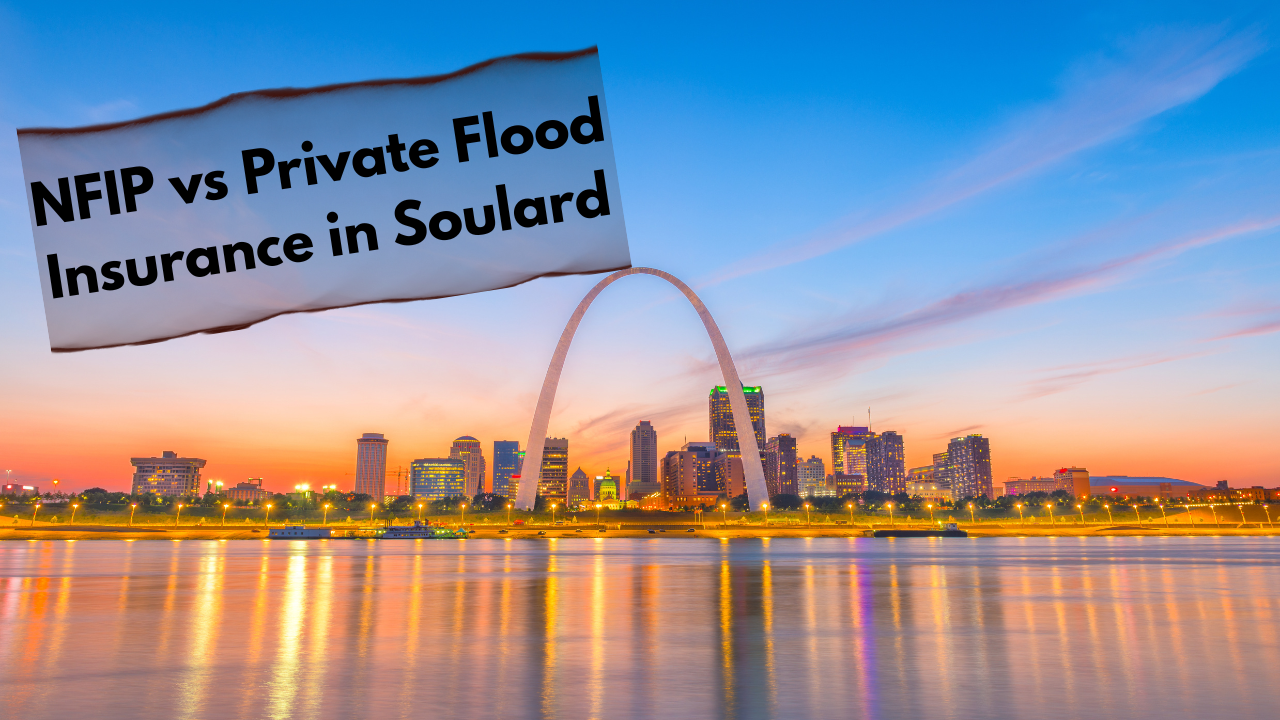Search for topics or resources
Enter your search below and hit enter or click the search icon.
October 21st, 2025
2 min read
By Chris Greene

Wondering whether to choose NFIP or private flood insurance for your Soulard home? And how do pricing, basement coverage, and contents protection really compare in 2025?
This article breaks down exactly how both options work, what drives the cost differences, and which one may be the better fit depending on your home’s location, features, and value.
You’ll discover:
How coverage limits and exclusions differ
Real Soulard premium comparisons
When NFIP still makes sense
What private flood insurance can offer that NFIP can’t
Under FEMA’s Risk Rating 2.0 and with most private insurers, flood zones no longer set your price. Instead, premiums are based on:
Distance to water
Elevation
Foundation type
Replacement cost
Claims history
And more
Flood zones still matter for lender requirements, but not for pricing.
Coverage Snapshot
Building limit: $250,000
Contents limit: $100,000
Contents valuation: Actual Cash Value (depreciated)
Basement: Limited (usually mechanicals only)
Additional Living Expenses (ALE): Not included
Waiting period: 30 days (unless tied to a loan or map change)
When NFIP Can Make Sense
Lower-value homes
Addresses where private carriers are not competitive or available
Properties with unique risk profiles that rate better under FEMA’s model
Coverage Snapshot
Building coverage: Often up to $1M or more
Contents coverage: Higher limits available
Contents valuation: Many offer replacement cost, not depreciated value
Basement: Often includes finished basements and contents
ALE: Commonly included to cover hotel or rental during repairs
Waiting period: Often 7 to 14 days, sometimes as fast as 1 to 3 days
Pricing: Frequently 25 to 40 percent less than NFIP in Soulard
One private quote does not represent the whole market. Even two policies underwritten by Lloyd’s of London can price differently due to separate rating models and contracts. Pros and Cons at a Glance
Pros and Cons at a Glance
NFIP Pros
Federally backed and guaranteed
Accepted by all lenders
Coverage always available, even post-disaster
NFIP Cons
Coverage capped at $250K building and $100K contents
Contents paid at depreciated value
Limited basement protection
No ALE
Longer 30-day waiting period
Private Pros
Higher coverage limits
Replacement cost for contents
Often includes basement contents
ALE usually included
Faster policy binding
Often lower premiums
Private Cons
Coverage terms vary by carrier
Some carriers may pause writing new business after large disasters
A few lenders are less familiar with private policies, though most accept them
Is NFIP always more expensive than private?
Not always. Some Soulard homes rate better with NFIP. You need a side-by-side comparison to know for sure.
Does NFIP cover finished basements or contents?
No. NFIP typically covers only essential equipment like furnaces or water heaters. Private flood insurance often includes finished basements and contents, depending on the policy.
Do private policies include Additional Living Expenses (ALE)?
Yes, many do. ALE pays for hotel or rental costs if you can’t live in your home due to a covered flood—something NFIP excludes.
Can I get replacement cost coverage for contents?
Yes. Unlike NFIP’s depreciated payouts, many private carriers offer replacement cost for personal belongings.
Do lenders accept private flood insurance?
Yes, as long as it meets federal guidelines. Most Soulard lenders accept qualified private coverage.
Choosing the right flood policy for your Soulard home could mean saving thousands, gaining basement coverage, or protecting your lifestyle with ALE.
We compare NFIP and multiple private carriers, including several Lloyd’s contracts, to help you:
Lower premiums
Get replacement cost on contents
Cover finished basements
Include ALE
Match your home’s true value